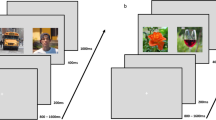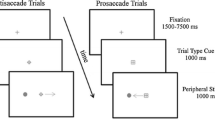Abstract
Rationale: Alcohol is known to affect most parameters of visually guided saccades, but it is unclear whether intoxicated subjects are able to utilize temporal or spatial pre-cues to compensate for their alcohol-related slowing of saccades. Objectives: We examined the effects of both temporal and spatial predictability on gain, latency, and peak velocity in sober and intoxicated subjects, e.g. by employing a temporal gap condition. Methods: Saccades were recorded with subjects once sober and once intoxicated (0.8 g ethanol per kg body weight). Unpredictable and predictable target locations alternated in both the classical (no gap) and temporal gap condition (extinction of fixation point 200 ms before target onset). Results: The gain was only slightly affected by alcohol, but increased for predictable target locations. After alcohol consumption, latencies increased, even in the gap condition and for predictable targets. However, intoxicated subjects took relatively more benefit from the gap than sober subjects did. In addition, they showed a ”pretrial effect”, i.e. their latencies depended on the condition for the previous saccade. For predictable target locations, latencies decreased and peak velocities increased both in sober and intoxicated subjects. Thus, intoxicated subjects were able to utilize both the spatial predictability and the temporal gap to speed up their saccades. Conclusions: These results lead to suggest that as far as the saccadic system is concerned alcohol predominantly affects the function of the superior colliculus (SC) and/or the oculomotor regions in the brain stem, either directly or indirectly. On the other hand, cortical areas assumed to mediate prediction and the gap effect seem to be less affected by alcohol intoxication.
Similar content being viewed by others
Author information
Authors and Affiliations
Additional information
Received: 27 July 1998 / Final version: 12 April 1999
Rights and permissions
About this article
Cite this article
Wegner, AJ., Fahle, M. Alcohol and visually guided saccades: gap effect and predictability of target location. Psychopharmacology 146, 24–32 (1999). https://doi.org/10.1007/s002130051084
Issue Date:
DOI: https://doi.org/10.1007/s002130051084




